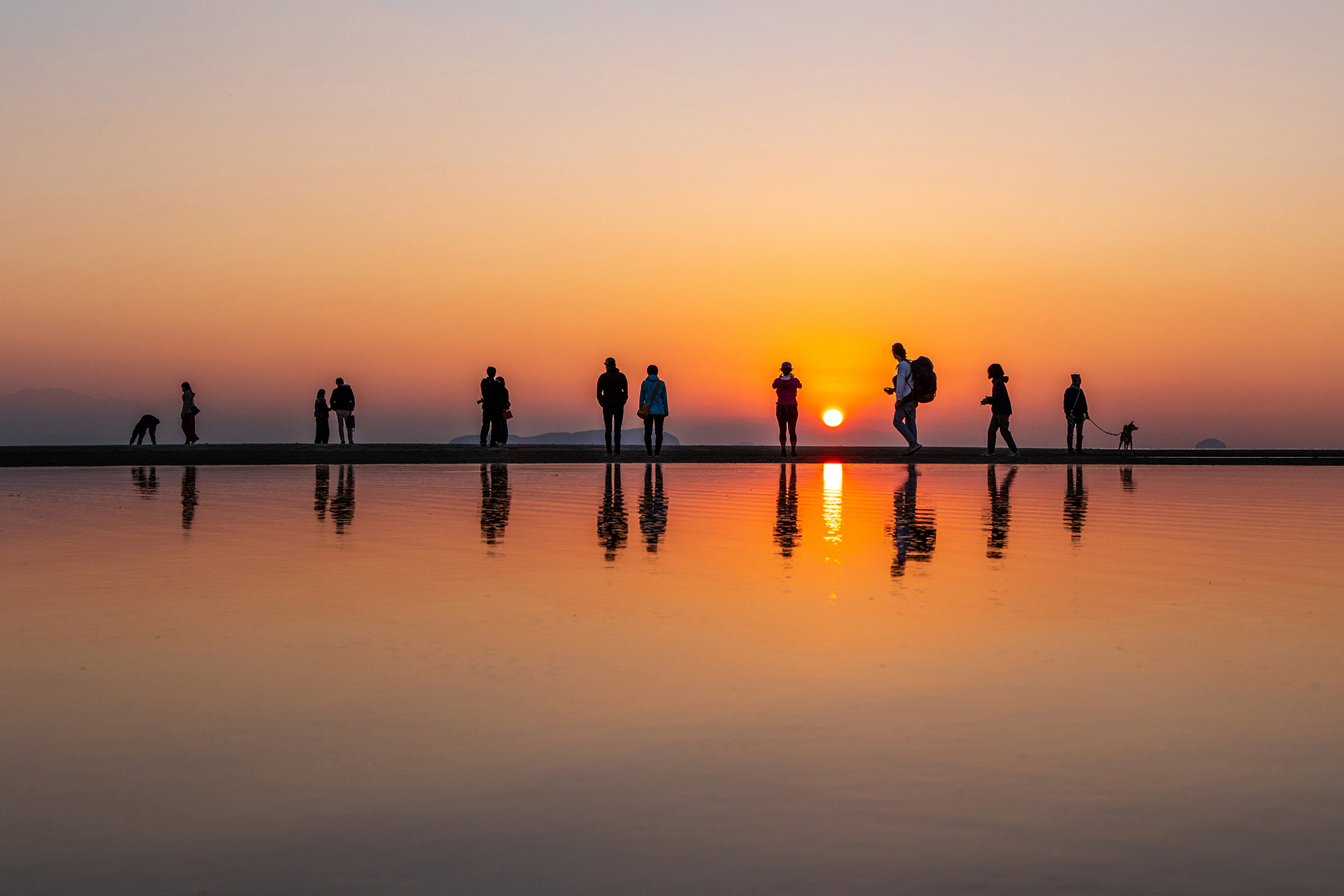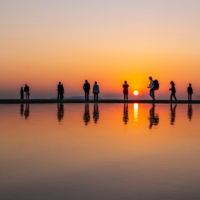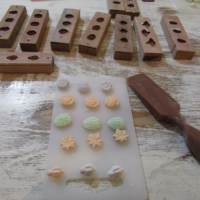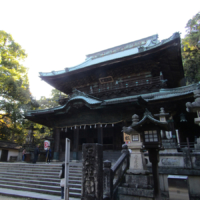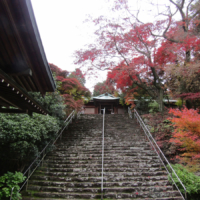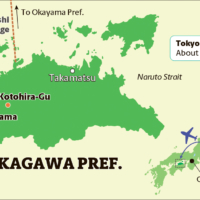On the northeastern tip of the island of Shikoku is Japan’s tiniest prefecture, Kagawa. It might be small, but only big adventures await travelers. Some of these include spectacular temples and shrines, interesting museums, fascinating interactions with nature and quaint train rides. Since Kagawa offers travelers a good bang for their buck, dare to step off of Honshu and discover why Kagawa Prefecture is a destination for big memories.
Rich history
Situated across from Okayama Prefecture on the other side of the Seto Inland Sea and backed by the Sanuki Mountains, Kagawa overflows with nature. In fact, it is home to Japan’s first national park, Setonaikai National Park, which was founded in 1934. Thanks to beaches, island views, mountain trails and lush forests, travelers can appreciate the nature through the scenery or interact with it by taking wooded hikes or seaside strolls.
Kagawa is rich in history. One of Japan’s most famous battles — the Battle of Yashima Island — took place in Takamatsu, the prefectural capital, in 1185. It also has shrines and temples that date back to early Japanese history. At the same time, it has museums that explain the more recent history of the prefecture and the sea, making Kagawa perfect for the history buff.
Despite having a population of just under 1 million and being considered a rural prefecture, a closer look reveals that Kagawa is big economically.
In agriculture, Kagawa is big because although it grows fruit like lemons and mandarin oranges, it is the nation’s leading olive producer. Travelers can interact with this aspect of Kagawa by visiting farms where interesting exports like bonsai grow, allowing them to learn about Kagawa and Japan at the same time.
Kagawa also has big tastes, and visitors should be sure to sample the array of food the prefecture is famous for. Most famous is the udon, a thick type of wheat noodle. People take day trips from Honshu just to eat udon. Another popular dish is honetsuki dori, a crispy chicken thigh dish seasoned beautifully with salt, pepper and garlic. There is also hina, which has more tender meat, and oya, which is tougher. Both are equally delicious.
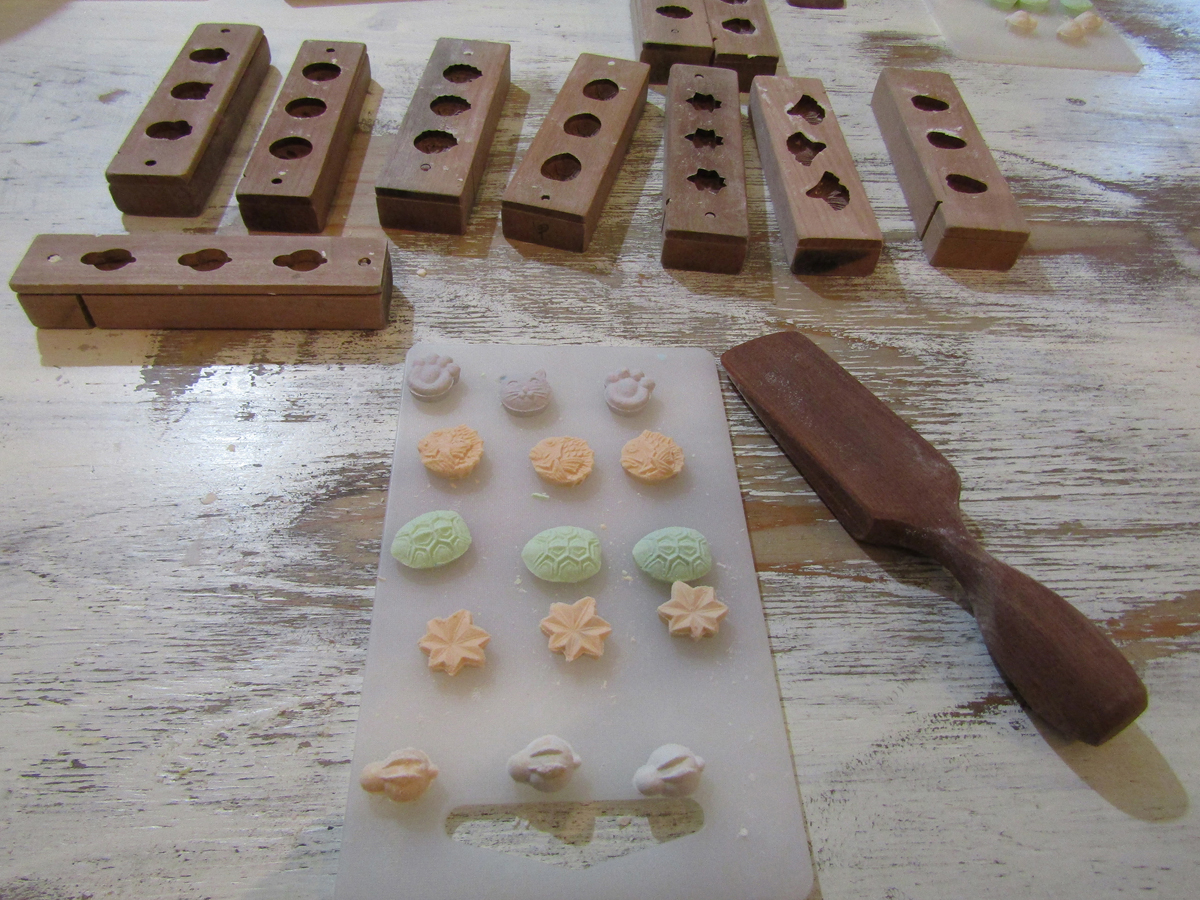
As well as those famous dishes, Kagawa has sugar candies called wasanbon that are sold in department stores and gift shops all around Kagawa. The best thing about these candies is travelers can visit outlets to make their own and take the leftovers home as souvenirs or gifts. Many consider Kagawa small, but those are some of the big reasons to visit. There are many more.
Big sea adventures
Because a large part of Kagawa borders the sea, it is no surprise that travelers can enjoy big ocean adventures. There are many places to stroll along the sea. Additionally, many transportation routes follow along the shore, therefore, whether down at sea level or up on the hilltops, breathtaking ocean scenery abounds, including views of famous islands, such as Yashima. However, the best ocean adventure is Japan’s version of Bolivia’s famous reflecting Uyuni Salt Flats — Chichibugahama Beach.
Chichibugahama Beach is a place of magic. It was not always like that. Until 1994 it was a beach that few people visited because it was littered in trash. A company wanted to build a plant on it, which upset many in the community. In response, area residents formed an organization — the Chichibu no Kai — to clean up the beach. Day by day, even in rain, snow and cold, the people in the organization picked up trash until it once again became a beautiful beach.
Once it was cleaned up, a photographer captured a scene of still water reflecting the sky 23 years later. Another photographer inspired by that picture took a similar one and submitted it to a local photo contest. While that picture didn’t win the contest, it caught the attention of the community and was widely spread on social media.
The local tourist organizations knew this was special, so they studied the best way to take pictures, the best times to do so and how to promote the opportunity. That was in 2017 and today it is a sensation because people from all over the world come to see the beach.
The people who picked up the garbage on the beach had harbored the dream of having a beautiful beach again and helping residents rediscover it. Today that is more than a dream come true as travelers come to take pictures and pose in the beautiful scenery. For those visitors, dreams and memories are made by the magic of the beach. At low tide, especially during sunset between spring and fall, the ocean slips back, leaving tide pools on the one-kilometer-long beach. During this time on a sunny day, the sky reflects like a mirror on the water of the pools. From the right angle, cameras or smartphones can capture stunning reflections of sunsets and clouds. Add people to the equation and the pictures become even better. People can stand, pose or jump to create interesting reflections.
If you come by yourself, ask a volunteer (wearing a blue jacket) to help you take a photo. Many people come with friends to make those friendship memories. But the best is to come with a partner or significant other because it is so romantic. There is a wedding chapel nearby and many newlyweds opt to pose on the beach. Many couples who are just starting their relationship come to Chichibugahama Beach to strengthen their bonds. Expecting parents come to get photos of the father posing with his hands on the mother’s belly to mark a milestone in their family. Then they come again to pose with the children. That might even continue for generations as a family tradition. Chichibugahama definitely leaves people with memorable photos they can cherish for a lifetime.
The magic of this beach is an inspiration in this age of environmental crises because the story of how a garbage-polluted beach became a center of beauty and photography gives hope to all during these uncertain times, and that hope enhances the experience. Chichibugahama Beach is a special place in Kagawa that exists nowhere else in Japan.
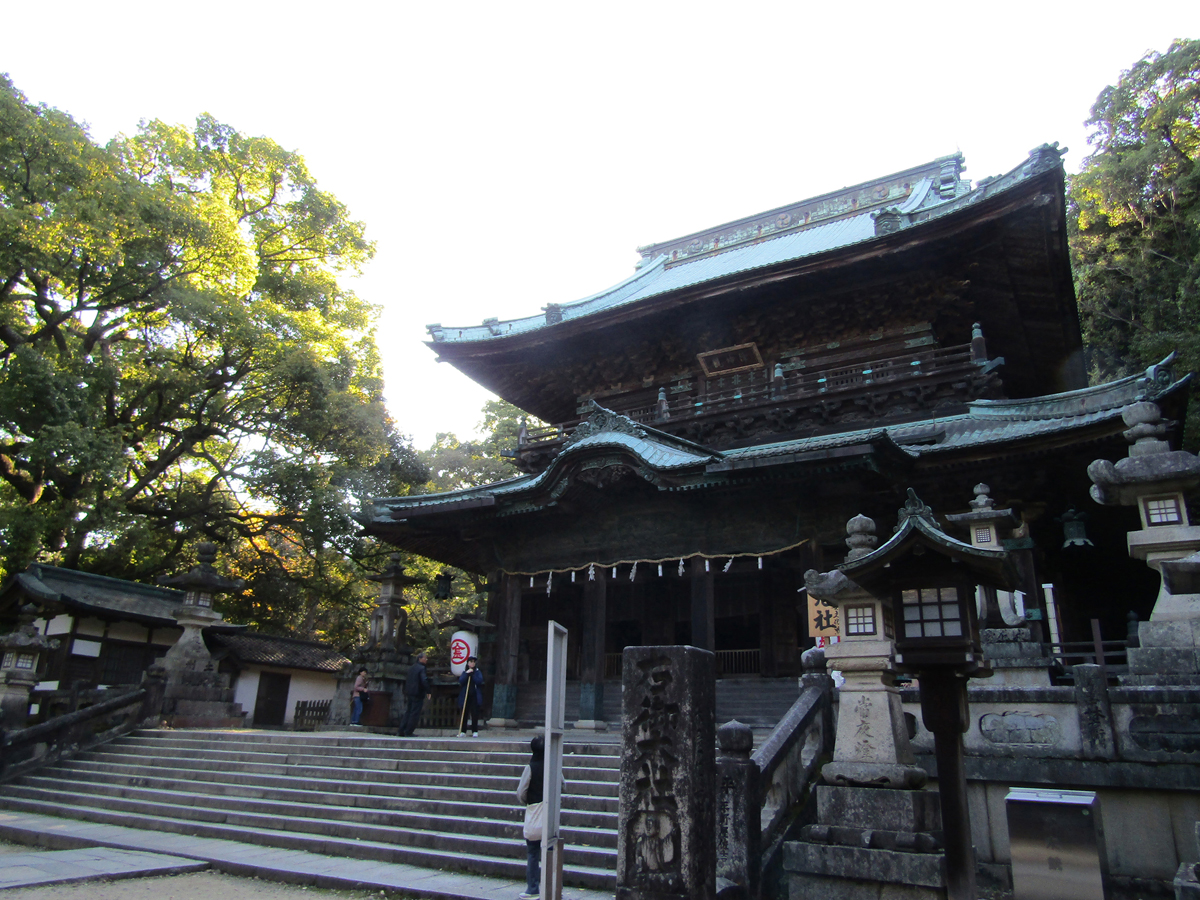
Big shrine, temple adventures
Temples and shrines are among the many reasons to visit Kagawa. One of Japan’s most famous shrines — Kotohira-Gu, also called Konpira-san — and the Shikoku Henro temples are both worth visiting for their cultural significance, historical values and refreshing natural surroundings
Kotohira-Gu became a popular place to travel in the Edo Period (1603 to 1868) and today remains a place many hope to visit. It is dedicated to the guardian gods of the sea, fertility and medicine. Within, visitors climb 785 stone steps through the forest to reach the different complexes. The shrine also offers scenic views of the sea and the Seto Ohashi Bridge that connects Shikoku to Honshu. Visitors should be sure to look closely at the detailed workmanship on and within the buildings, as well as the famous artworks inside. Even the layout of the grounds is beautifully organized. It is easy to spend a whole day exploring the shrine and surrounding area.
Besides Kotohira-Gu, Kagawa also hosts part of the Shikoku Henro — the roughly 1,400-kilometer Buddhist pilgrimage route involving 88 temples. Temples 66 to 88 are in Kagawa. People dress in white outfits, use canes and wear triangle-shaped hats as they walk from temple to temple seeking spirituality. Many of them are in serene settings up in forested hills. They say the tradition of walking among the temples dates back to over a thousand years ago, when priests followed in the footsteps of the famous monk Kukai (774 to 835). In the 17th century, a guidebook about the pilgrimage was published, suddenly making it famous among ordinary people around Japan. Ever since then, people have visited these temples from all over Japan. Just experiencing a small part of the henro helps travelers understand the spirituality.
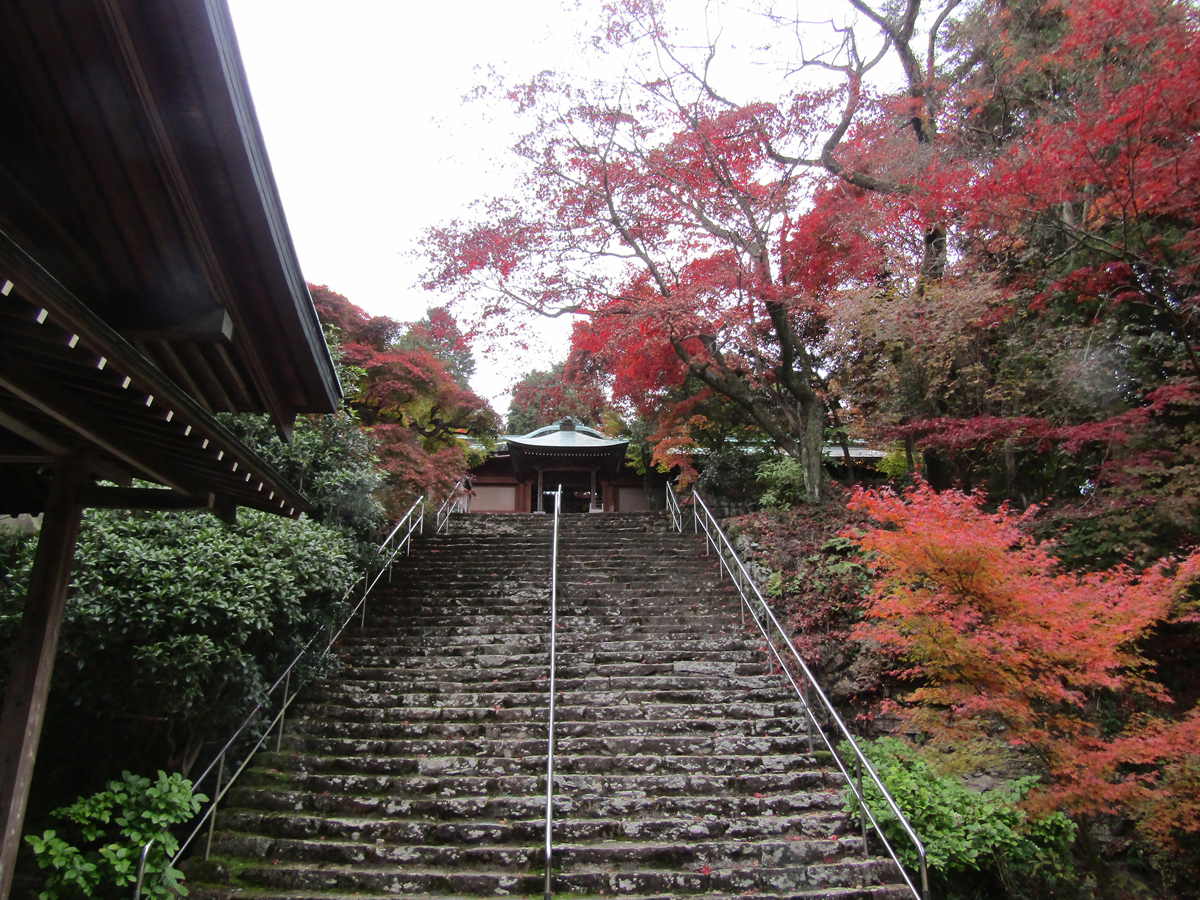
Impressive art heritage
Kagawa promises an excellent trip for art aficionados. It has acclaimed Japanese works as well as those by renowned foreign artists. It also will host an international art festival in 2025, making art another big reason to visit.
Kotohira-Gu Shrine has paintings from the painter Maruyama Oukyo (1733 to 1795). People come from all around Japan to see his paintings and many rooms highlight his exquisite works. His most interesting painting features tigers as the subject, but since he never actually saw one, he imagined what they look like and painted them with cats’ eyes.
The world-famous Japanese-American sculptor Isamu Noguchi (1904 to 1988) had a house and studio in Kagawa. Today it is a museum and houses many of his sculptures. Visitors can see works that he completed and others he never completed as he hoped to let the outside elements finish the work. His works also appear around the prefecture.
Those visiting Kagawa between spring and fall this year should be sure to visit the Setouchi International Art Festival. Here, visitors can see all kinds of contemporary art. Due to all the amazing and interesting art, the festival makes Kagawa a center for art in Japan, and any visit to Kagawa can have an artistic element.
Smooth, delightful travel
There are many ways to travel around Kagawa. One option is to travel with licensed interpreters. Recently the government deregulated the driving rules, allowing licensed interpreters to take tourists to hard-to-reach sights. This is much better than renting a car and attempting it yourself.
Another way to travel through Kagawa is on the local Takamatsu Kotohira Electric Railroad, known locally as the “Kotoden.” These trains travel not just to oft-mentioned sights known for traditional Japanese experiences, but also through scenic areas. For example, some onsen (hot spring) baths, like Busshozan, are located close to train stations. As for scenic views, in the spring, the train travels under cherry blossoms and along the coast where views of not only the ocean, but also the many islets, abound. On that train ride, visitors can enjoy many views of the most famous islet of all, Yashima, and even smaller ones that look like little volcanoes jutting out of the ocean. Another treat is provided by the mountain slopes; the mountains are especially beautiful right after the rainy season, when the trees are an intense green, or later in the year when autumn foliage is at its peak. The scenery is a definite reason to ride the local trains.
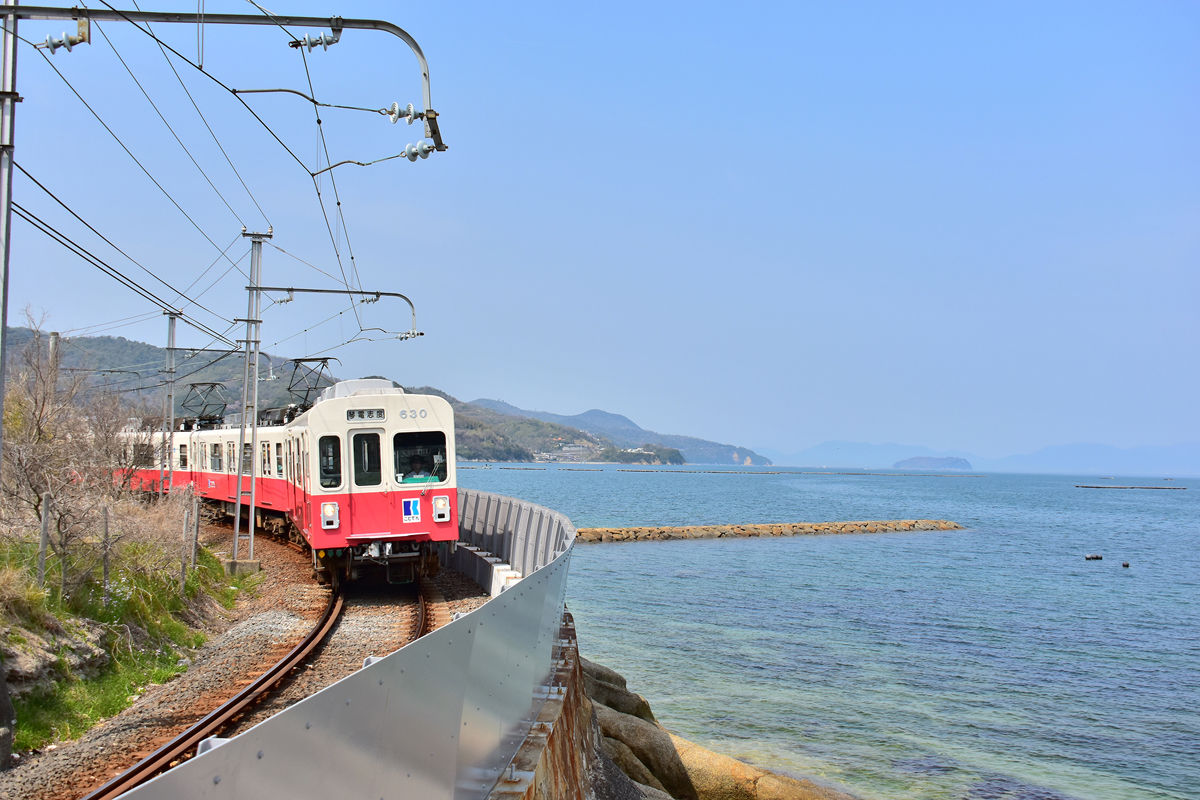
The first Kotoden trains started in 1911 and have been running ever since. There are three lines: red, green and yellow, with the cars painted to match them. They run along 60 km of track and also have many cute trains adorned on the outside with advertisements of cartoonish pictures of sea critters like whales and whale sharks, or on the inside with cute cartoon characters.
Because Kotoden makes use of historical trains in its operations, area residents liken the line to a living museum. Kotoden even has mascots that appear in stations and on brochures about the train line. The mascots are modeled after dolphins and include a male, female and a child. Travelers should be sure to watch for those mascots and enjoy how much they add to the Kotoden experience.
The best aspect of traveling on Kotoden is a chance to experience life for many people in Kagawa. The trains consist of only two cars and the conductors walk up and down the aisles collecting fare. At the stations, because they run pretty much once every 30 minutes, there are bookshelves full of works of various genres in case commuters arrive early and need to kill time. Whether it is a short or long ride, experiencing local Kagawa life makes the trip better.
For those looking to have big experiences in Japan, Kagawa is a must-visit. There are quaint train rides, shrines, temples and art that have impacted Japanese culture, along with natural experiences that are found in few other places in the world. Visitors are invited to follow in the steps of Japanese, both past and present, who have jumped over to Kagawa for a serendipitous experience and left Shikoku with nothing but big memories. That is the magic of little Kagawa.
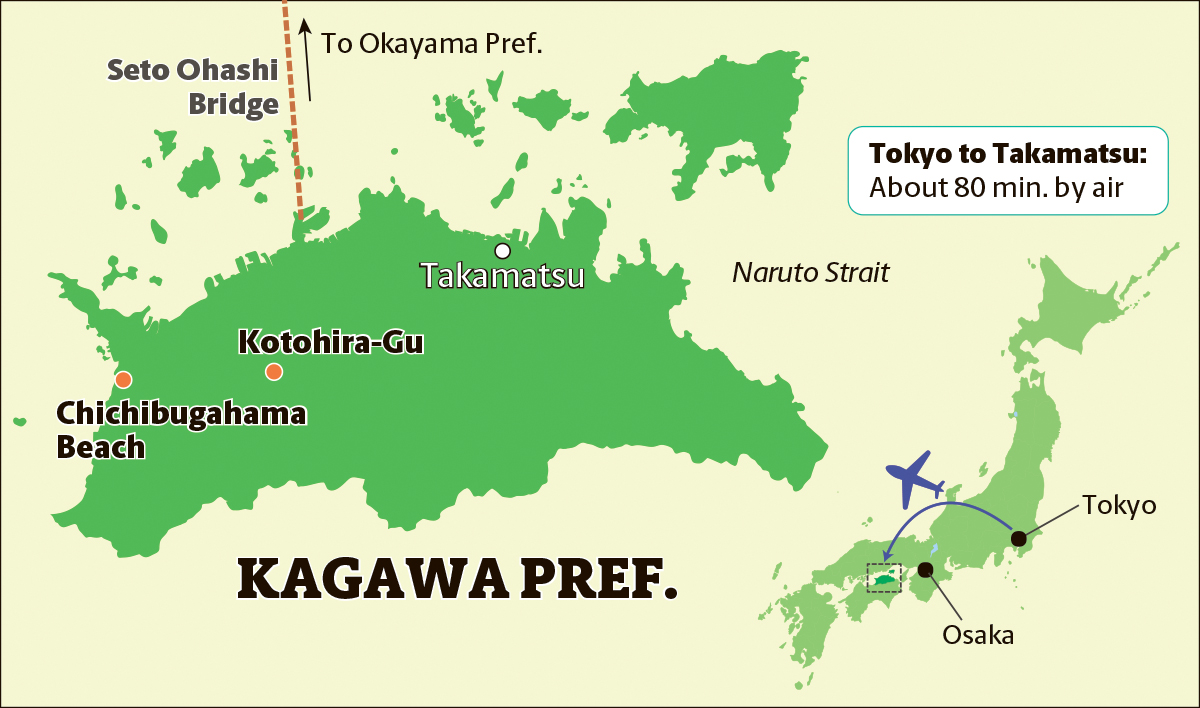
This article is sponsored by KNT-CT Holdings. For more information about Kagawa travel, visit https://nbs-truejapan.



